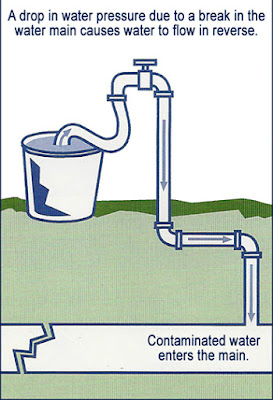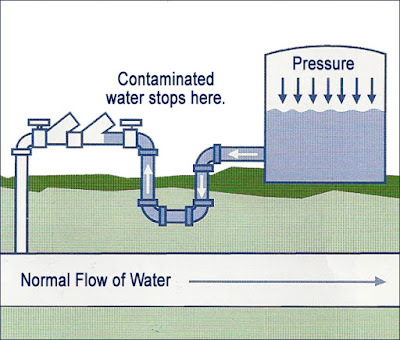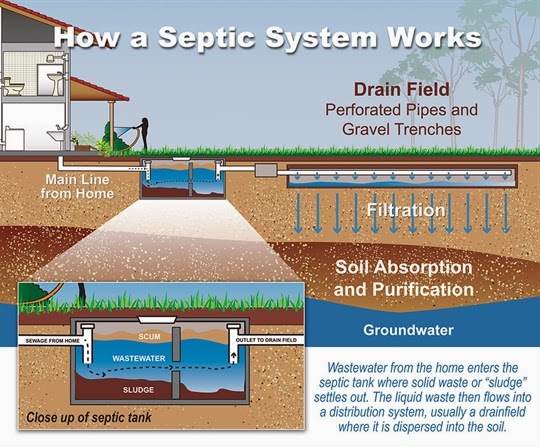Q.
Explain the followings:
(i) Self Siphonage
(ii) Back Pressure
(iii) Septic Tank
(25 marks, 2016 Q5)
A.
(i) Self Siphonage
From freedictionary.com, it is
The removing of water from a trap, 1 (thereby breaking the seal) as a result of siphonage setup by the momentum of discharge from the fixture to which the trap is connected.
http://www.pittmeadows.bc.ca/EN/main/business/607/Cross-Connection-Control-Program.html
(ii) Back Pressure
Back pressure usually only occur when a mechanical pump is installed for a certain purpose, like pumping the water to high rise buildings. However, when this high pressure piping is connected back to its original piping from the main, it would have higher pressure than the main supply.
The District requires the use of backflow prevention devices at certain types of facilities to prevent contamination of the water supply.
(iii) Septic Tank
The septic tank is buried, watertight container typically made of concrete, fiberglass, or polyethylene. It holds the wastewater long enough to allow solids to settle out, forming sludge, and oil and grease to float to the surface as scum. It also allows partial decompositions of the solid materials. Compartments and a T-shaped outlet in the septic tank prevent the sludge and scum from leaving the tank and traveling into the leach field/drain field area.
The wastewater exits the septic tank and is discharged into the leach field/drain field for further treatment by the soil. The partially treated wastewater is pushed along into the leach field/drain field for further treatment everytime new wastewater enters the tank. If the leach field/drain field is overloaded with too much liquid it will flood, causing sewage to flow to the ground surface or create backups in plumbing fixtures and prevent treatment of all wastewater.
Septic tank wastewater flows to the leachfield/drainfield, where it percolates into the soil, which provides final teatment by removing harmful bacteria, viruses, and nutrients. Suitable soil is necessary for successful wastewater treatment.
Ref:
http://a1environmental.net/septic-tank-pumping
http://www.friendlyseptic.com/what-is-a-septic-tank/







